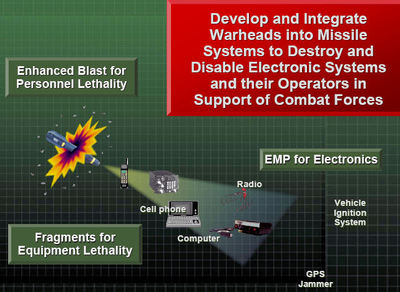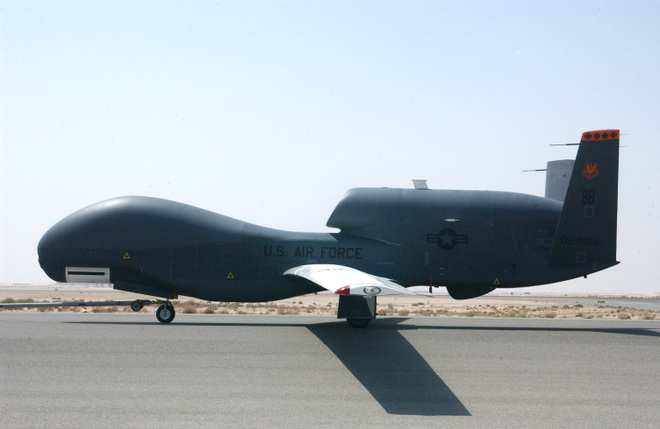New Army Weapon Aims to Fry Gadgets, People
 Electronics-frying "e-bombs" have been discussed for decades — but
rarely, if ever, deployed. Knocking out computers and communications
gear with electromagnetic radiation is nice, but commanders prefer the
proven method: blowing stuff up.
Electronics-frying "e-bombs" have been discussed for decades — but
rarely, if ever, deployed. Knocking out computers and communications
gear with electromagnetic radiation is nice, but commanders prefer the
proven method: blowing stuff up.
Now the U.S. Army is developing technology to do both at the same time. Hybrid munitions would give warheads the added punch of an e-bomb that can "destroy and disable electronic systems and their operators" all in one blast. The key is a magnet that blows up and spontaneously demagnetizes, releasing energy as a pulse of power. Oh, and antennas made of fire. My story in the current Defense Technology International explains.
Previous e-bomb designs were based on explosively driven magnetic flux compression generators. They used a series of tightly wound, current-carrying metal coils that are rapidly compressed by an explosion. The new technology is much more compact. It's based on research showing that some magnets will spontaneously demagnetize when hit by a powerful enough shock wave, releasing a pulse of energy, in the process. The technical term is "pressure-induced magnetic phase transition."
Having proved the principle by blowing up neodymium magnets (like the ones in your headphones) the Army's Aviation and Missile Research Development and Engineering Center (Amrdec) have moved on to lead zirconate titanate magnets. The current state of the art is described as a completely explosive ultracompact high-voltage nanosecond pulse-generating system, occupying about one-fifth of a cubic inch.
There are engineering challenges at the other end. For this new weapon to work, you need an antenna that can fit inside a warhead, but is big enough to do the job. The problem is, the size is dictated by the properties of the electromagnetic pulse to be generated. You could used some sort of folding antenna, perhaps. The Army is going one step further and using an antenna made out of fire. To be more exact, Allen Stults of Amrdec is using the jet of ionized plasma produced by the explosion as an antenna.
Continue reading "New Army Weapon Aims to Fry Gadgets, People " »
















 For thirty-six years, an internal Pentagon think tank has been forecasting the future for military leaders -- and shooing the public away from its seemingly infinite stream of studies. But thanks to TPM Muckracker's Justin Elliott, us outsiders
For thirty-six years, an internal Pentagon think tank has been forecasting the future for military leaders -- and shooing the public away from its seemingly infinite stream of studies. But thanks to TPM Muckracker's Justin Elliott, us outsiders 



 web sites:
web sites: